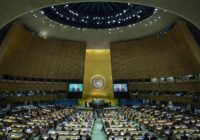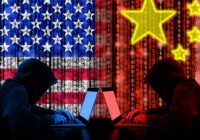“Digital diplomacy” (or “e-diplomacy” or “cyber diplomacy”), refers to diplomats and governments using digital technologies to achieve diplomatic objectives and conduct international relations. Across the globe, the language of digital diplomacy is evolving. Germany’s vernetzte Diplomatie (“networked diplomacy”) sits alongside Denmark’s “techplomacy” and the French concept of diplomatie numérique (“digital diplomacy”). All these terms include public diplomacy, crisis communication and bilateral and multilateral negotiations through digital channels.
The digital revolution has fundamentally reshaped diplomacy. It altered how states and international actors engage. Traditionally, opaque diplomatic efforts relied on face-to-face interactions. The advent of online tools and platforms, particularly social media, has ushered in an era of enhanced openness and public participation. These digital avenues empower leaders and diplomats to communicate directly with global audiences.
Notwithstanding, digital diplomacy is not without challenges. Cybercriminals and purveyors of misinformation threaten the integrity of diplomatic communications. The absence of comprehensive international legal frameworks governing cyberspace creates a precarious environment.
Communication technologies transformed diplomacy from weeks to minutes
Early diplomacy required diplomats to travel for face-to-face meetings. Medieval ambassadors traveled weeks to reach destinations, often through dangerous areas. These envoys, like the pioneering Venetian diplomats, lived abroad for continuity in foreign relations. Separation from homelands meant sporadic contact and limited decision-making. Sending and receiving messages took time, delaying negotiations and foreign policy.
In the 15th century, the printing press changed access to and the spread of information, including diplomatic documents. Johannes Gutenberg’s invention in 1440 allowed fast and cheap book and pamphlet production. This meant wider availability of printed materials. The printing press also improved historical record-keeping, allowing diplomats to reference past agreements. Faster production and distribution of documents facilitated smoother communication between diplomats and their governments.
The 19th-century invention of the telegraph further transformed foreign policy and international relations. Samuel Morse‘s developments in the 1830s and 1840s allowed messages to travel long distances in minutes, not days or weeks. This was evident during the American Civil War, when President Abraham Lincoln used the telegraph to communicate with generals, controlling military strategy. In diplomacy, the telegraph allowed real-time coordination between governments and representatives abroad. This improved foreign policy’s precision and effectiveness. During the Franco-Prussian War (1870–1871), telegraphs played a crucial role in diplomatic maneuvers leading up to and following the conflict.
The 20th century saw further advancements with the telephone. It enabled direct interaction and faster negotiations. Building on Alexander Graham Bell’s 1876 invention, the telephone networks of the 20th century transformed communication by allowing real-time conversation over long distances. The telephone’s impact on diplomacy became clear during World War I, when it facilitated coordination among Allied powers.
The Red Telephone, a hotline between the White House and the Kremlin, allowed direct and immediate communication between US President John F. Kennedy and Soviet Premier Nikita Khrushchev during the Cuban Missile Crisis in 1962, playing a vital role in deescalating that nuclear standoff. This ability to confer and negotiate instantly further expedited decision-making and allowed for more responsive diplomatic engagements. Additionally, radio and television brought the public into diplomacy, adding a societal dimension to international relations. US President Franklin D. Roosevelt’s fireside chats used radio to communicate directly with and reassure the American public.
Digital tools transformed diplomatic practices
Transitioning into the late 20th and early 21st centuries, the digital revolution transformed diplomacy. The internet and email brought unprecedented connectivity and immediacy in communication. During the 1990s, email replaced traditional diplomatic cables, allowing diplomats to exchange documents, analyses and instructions in real time, regardless of location. This transformation is evident in historical events. The negotiators of the 1995 Dayton Accords relied heavily on email for real-time communication between diplomats from the US, Europe and the warring parties in Bosnia. This era marked the beginning of digital diplomacy, where speed and breadth of information exchange allowed for more sophisticated diplomatic strategies.
As the 21st century developed, social media platforms furthered diplomacy by introducing public diplomacy and real-time engagement with domestic and foreign audiences. A prime example of this impact is the Arab Spring, a series of pro-democracy uprisings that began in December 2010 in Tunisia and spread rapidly across the Middle East and North Africa. Social media platforms like Facebook and Twitter played a critical role in these events. Activists used social media to organize protests, share information that bypassed state-controlled media and document human rights abuses.
During the Egyptian revolution in 2011, live streams on social media platforms like Al Jazeera showed the scale of protests and the violence used by authorities, galvanizing international support for the estimated 2 million demonstrators in Tahrir Square. Social media also allowed for real-time communication and coordination among protestors. This enabled them to adapt their tactics and respond quickly to government actions. Hashtags like #Egypt and #Jan25 became rallying cries, uniting millions across the region.
The #BlackLivesMatter movement in 2020 leveraged social media to raise awareness of racial injustice, sparking international conversations and pressuring governments for reform. This demonstrates how social media can amplify marginalized voices and influence global agendas. Similarly, youth activists like Greta Thunberg utilize social media platforms like Twitter to mobilize millions around the world for climate action . Social media allows them to bypass traditional media gatekeepers and connect directly with a global audience.
Governments leverage social media as a powerful tool to shape public opinion and international dialogue. This bypasses traditional media and allows for direct promotion of their narratives. Chinese diplomats actively use platforms like Twitter to push China’s message and counter criticism. Western media has termed this tactic Wolf Warrior Diplomacy, referencing a popular Chinese action film. This term reflects China’s assertive foreign policy and its approach to foreign media. In 2020, Chinese diplomats on Twitter countered criticism of China’s handling of COVID-19. They disputed accusations of delayed reporting by pointing to early warnings issued by Chinese authorities. Additionally, they shared videos showcasing China’s rapid construction of medical facilities to counter claims of a slow response.
In contrast, countries like South Korea leverage cultural exports like K-pop to cultivate positive international sentiment and project a softer image. The Korean Wave, a global phenomenon driven by K-pop music and dramas, has garnered international interest in Korean culture.
Furthermore, advanced communication technologies like video conferencing facilitate face-to-face meetings without travel, saving time and resources. Secure video conferencing platforms played a vital role during the Iran Nuclear Deal Negotiations (2013–2015). It facilitated confidential and efficient communication between Iranian and Western negotiators despite the deep political distrust rooted in the 1979 Iranian Revolution, the Iran-Iraq War (1980–1988) and Western concerns over Iran’s nuclear program.
Video conferencing improves efficiency and reduces the carbon footprint of diplomacy. The World Economic Forum estimates that video conferencing can reduce business travel emissions by up to 80%, a significant contribution in the fight against climate change. In 2020, the G-20 leaders’ summit, typically a face-to-face event involving over 30,000 participants, successfully transitioned to a virtual format due to the pandemic.
How cyberattacks have become more sophisticated and destructive
Cyber threats have exploded in the past 20 years. Perpetrators have expanded from petty scammers to large organizations offering cybercrime as a service. Take the 2007 cyberattack on Estonia, believed to be Russian in origin. This attack crippled the country’s banking, media and government networks. More recently, the 2021 SolarWinds supply chain attack compromised widely used software globally.
The 2021 Colonial Pipeline ransomware attack by DarkSide exemplifies the scale and impact of modern cybercrime. This attack caused fuel shortages and price hikes across the eastern United States. This underscores the urgent need for international collaboration on defense strategies, threat intelligence sharing and holding attackers accountable.
The United Nations, in response to the growing threat of cybercrime, established the Group of Governmental Experts (UNGGE) in 2004. This group’s mission was to create clear norms for responsible behavior by countries in cyberspace. Through a series of influential reports released in 2010, 2013, 2015 and 2021, the UNGGE outlined these norms. These reports emphasize that nations should not use information and communication technologies (ICTs) for illegal activities. The 2015 report specifically called on states to avoid conducting or supporting any ICT activity that could damage critical infrastructure.
In 2019, the UN took a proactive step against cybercrime by establishing an Open-Ended Ad Hoc Committee (AHC). This committee’s mission is to draft a comprehensive international convention specifically focused on cybercrime. Despite facing challenges, the committee has made significant progress. Notably, the committee’s meetings in March 2021 focused on crucial aspects like international cooperation, capacity-building and ensuring the protection of human rights within the context of cybercrime.
Despite progress, cybercrime continues to operate in a largely lawless environment. The 2015 agreement between the US and China exemplifies the challenges of cyber diplomacy. Facing accusations of state-sponsored cyber theft of intellectual property and commercial secrets targeting US companies, US President Barack Obama and Chinese President Xi Jinping reached an agreement. This agreement saw both countries pledge to refrain from conducting or supporting cyber-enabled theft of intellectual property. For the US, this strategic move aimed to curb China’s cyber espionage and establish a framework for future cooperation. Later reports indicated a temporary decrease in Chinese cyber activity targeting US firms.
The integration of the digital world into diplomacy presents a double-edged sword. On the positive side, it has made diplomacy more transparent and democratic by involving the public. However, new challenges like cyber espionage and hacking have also emerged.
[Ali Omar Forozish edited and conducted research for this piece.]
The views expressed in this article are the author’s own and do not necessarily reflect Fair Observer’s editorial policy.
Support Fair Observer
We rely on your support for our independence, diversity and quality.
For more than 10 years, Fair Observer has been free, fair and independent. No billionaire owns us, no advertisers control us. We are a reader-supported nonprofit. Unlike many other publications, we keep our content free for readers regardless of where they live or whether they can afford to pay. We have no paywalls and no ads.
In the post-truth era of fake news, echo chambers and filter bubbles, we publish a plurality of perspectives from around the world. Anyone can publish with us, but everyone goes through a rigorous editorial process. So, you get fact-checked, well-reasoned content instead of noise.
We publish 2,500+ voices from 90+ countries. We also conduct education and training programs
on subjects ranging from digital media and journalism to writing and critical thinking. This
doesn’t come cheap. Servers, editors, trainers and web developers cost
money.
Please consider supporting us on a regular basis as a recurring donor or a
sustaining member.
Will you support FO’s journalism?
We rely on your support for our independence, diversity and quality.











Comment